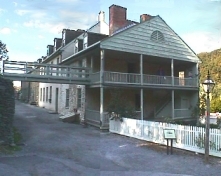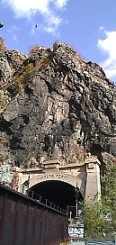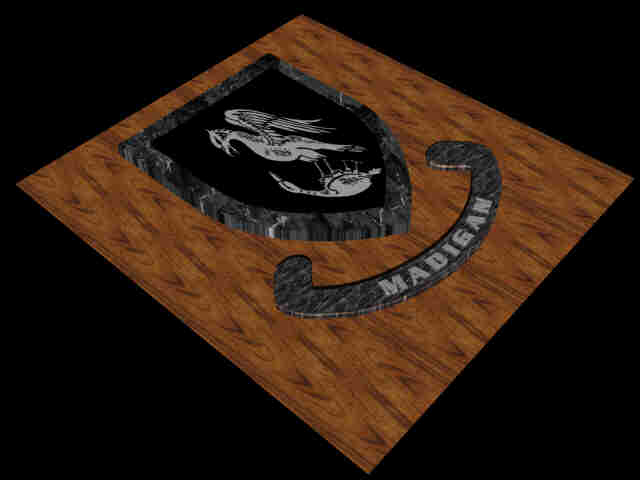Rather  than try and recount more of the
incidents and/or battles that took place I will try to describe
the town as it is today and how the National Park Service has
tried to help us see history through it.
than try and recount more of the
incidents and/or battles that took place I will try to describe
the town as it is today and how the National Park Service has
tried to help us see history through it.
A good many of
the buildings were restored and can be gone through. The visitors
center, in town, is a lovely white house that has many paintings
and exhibits along with a ranger to answer your questions. As you
go out into the town a number of the buildings along the  main street have been refurbished (or
are in the process of being restored) and are set up in such a
manner that you can go in and see the exhibits, many of which
have either audio or visual presentations connected with them, at
your own pace. One was particularly interesting because it was a
series of video presentations which were presented one after
another in different rooms of the building. It was kind of like a
serial movie. There was a ranger there answering questions and
making sure you made it to the next film on time. One building
that was in the process of being restored had open sections of
walls or floors that showed where the original structures were
and speculated on what type of store it might have been.
main street have been refurbished (or
are in the process of being restored) and are set up in such a
manner that you can go in and see the exhibits, many of which
have either audio or visual presentations connected with them, at
your own pace. One was particularly interesting because it was a
series of video presentations which were presented one after
another in different rooms of the building. It was kind of like a
serial movie. There was a ranger there answering questions and
making sure you made it to the next film on time. One building
that was in the process of being restored had open sections of
walls or floors that showed where the original structures were
and speculated on what type of store it might have been.
Now, for you
ladies who might not enjoy this type of thing there were also
some restored buildings  on some
of the side streets that have been turned into shops, and
restaurants.
on some
of the side streets that have been turned into shops, and
restaurants.
After stopping
for a snack at one of the restaurants in town we proceeded up the
hill to a Catholic Church that stood high above the town. This
was an original structure that survived the many battles. We have
to remember that Harpers Ferry changed hands eight times during
the civil war. Story has it that Father Costello who was then the
pastor for the church, ran up the British Union Jack Flag on the
church during all of the skirmishes to indicate the church's
neutrality. Well, the Union and Confederates must have figured
they had enough problems on their hands without taking on the
British, so neither side fired on the Church, while buildings all
around it fell.
When you go
across the bridge to look at the confluence of the Potomac and
Shenandoah Rivers, you will  see Maryland Heights up which Confederate Forces took
a number of very large artillery guns. An awesome task
considering the angle of assent and the hillside. It was there
that they would shell the Union into submission during one of the
battles.
see Maryland Heights up which Confederate Forces took
a number of very large artillery guns. An awesome task
considering the angle of assent and the hillside. It was there
that they would shell the Union into submission during one of the
battles.
In addition to
the buildings in the town there are several other surrounding
areas that you can see on foot (anything from 1-5 hrs according
to the map) to give you an idea of the entire area.
In 1882,
several years after the Civil War (that's the War Between the
States for you southerners) was over, Frederick Douglass a former
slave who had become a prominent journalist and orator, journeyed
to Harpers Ferry to deliver an important address on John Brown
for the 14th anniversary of Storer College. Storer College was
established in 1867 to educate former slaves. Storer College is
still in operation today.
As we got on
our shuttle bus to return to the main visitors center, I was once
again impressed with a
deep appreciation for our forefathers who fought so vigorously
for the freedom that we all to often in this day and age take for
granted.
with a
deep appreciation for our forefathers who fought so vigorously
for the freedom that we all to often in this day and age take for
granted.
My story only
touches on a great many features that are offered in the park,
but if you would like more information be sure and check out their website.
Good Luck! Have Fun! and Stay Safe!
Laura
*** THE END ***
